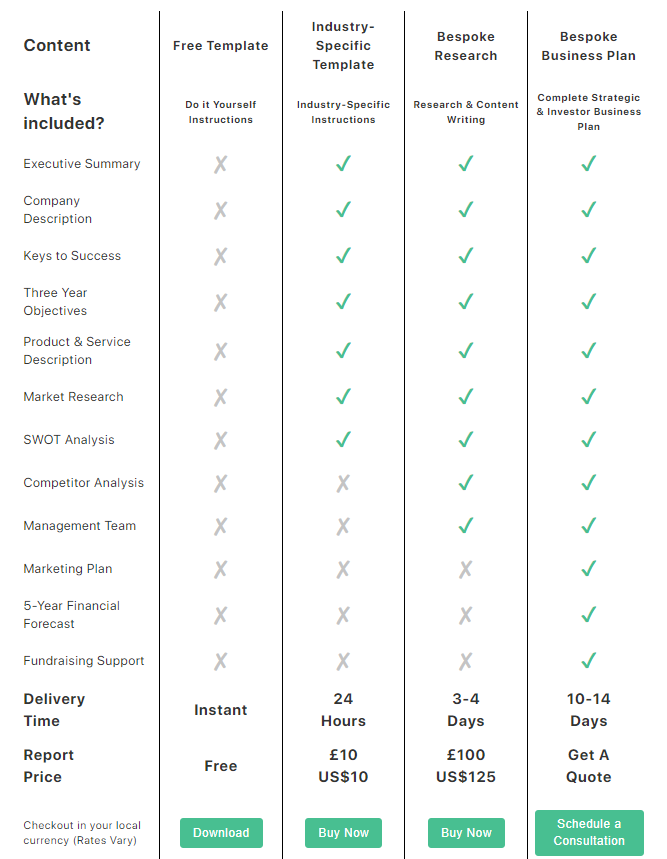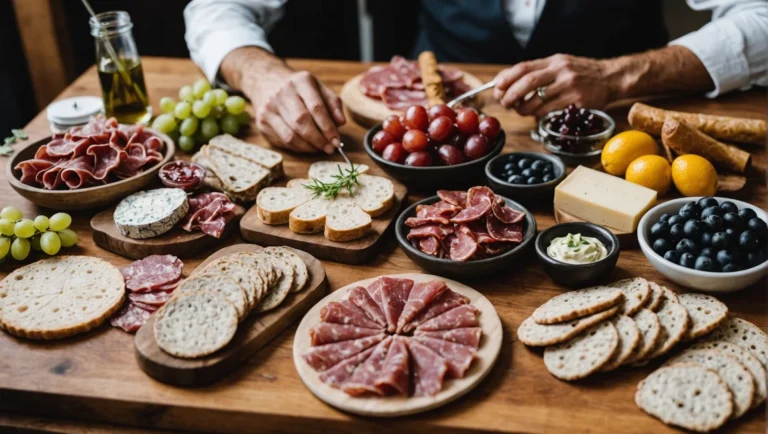Starting a charcuterie business offers a unique opportunity to tap into a growing market that values artisanal foods and high-quality ingredients. The charcuterie industry is flourishing as consumers increasingly seek out beautifully crafted boards featuring premium cured meats, cheeses, and other artisanal products. Whether you’re looking to start a charcuterie business or expand an existing one, understanding the nuances of this market is crucial.
Market research is essential for identifying your target audience and tailoring your offerings to meet their preferences. By leveraging social media marketing and maintaining a strong online presence, you can effectively promote your charcuterie boards and build a successful charcuterie board business.
Incorporating a solid business plan, utilizing charcuterie business plan templates, with a focus on high-quality ingredients, sustainable farming practices, and a well-defined pricing strategy will ensure your business stands out in a competitive market. With the right approach, your charcuterie business can thrive, delighting customers and carving out a niche in the charcuterie market. To make certain your venture reaches its full potential, a comprehensive and tailored plan for your charcuterie business is indispensable.
Lower your delivery costs by 23%
How we reduce costs:
- No delivery vehicle expenses
- Optimized local routes
- Pay-per-delivery model
- Average 23% delivery cost reduction
Exploring the Charcuterie Market
Understanding the charcuterie industry involves diving deep into the nuances of a growing and dynamic market. The charcuterie industry is characterized by its focus on high-quality, artisanal cured meats and beautifully crafted boards. With a rising interest in gourmet and artisanal foods, charcuterie businesses are capitalizing on trends that emphasize premium ingredients and unique flavor profiles. To navigate this competitive landscape successfully, a well-thought-out plan for a charcuterie business is essential for differentiation and growth.
Market research is crucial for grasping the current landscape. Analyze trends such as the increasing popularity of sustainable farming practices and high-quality ingredients. By understanding these trends, you can position your own charcuterie board business to meet consumer demands and capitalize on emerging opportunities. This insight is vital for crafting a solid business plan that aligns with industry expectations and sets the foundation for a successful charcuterie business. Consider incorporating services like our same-day delivery service in Houston to enhance customer convenience and satisfaction. Offering quick delivery can significantly improve your brand’s appeal, especially for customers seeking fresh charcuterie boards for immediate enjoyment or special events.
When crafting your offerings, it’s important to avoid common pitfalls that can detract from customer satisfaction. Recognizing and steering clear of frequent typical charcuterie menu errors can make a significant difference in the quality and appeal of your boards. By carefully selecting complementary flavors and focusing on presentation, your charcuterie boards will not only taste exceptional but also impress visually, enhancing the overall customer experience and helping your business flourish.
Additionally, understanding your target market helps tailor your offerings to meet specific needs. Whether you’re focusing on local specialty food stores, catering to corporate events, or appealing to home consumers, a thorough grasp of the charcuterie market trends will guide your marketing strategy and help you establish a strong charcuterie brand. For businesses looking to streamline their logistics, consider utilizing a reliable courier service in New York City to enhance your delivery capabilities and ensure timely arrival of your products to customers, thereby improving customer satisfaction and operational efficiency.
To spark creativity and differentiate your offerings, explore innovative charcuterie board inspiration and ideas. This resource provides a variety of creative approaches to assembling boards that cater to diverse tastes and occasions, helping you captivate your audience and keep your business fresh and exciting.
Metrobi is transforming charcuterie board deliveries
Specialized solutions for charcuterie board businesses:
- Charcuterie board-trained drivers
- Proper handling equipment
- Peak day delivery support
- 23% average cost reduction
Navigating Industry Trends and Defining Your Unique Selling Proposition
Staying ahead in the charcuterie industry requires not just understanding but also adapting to industry trends. The market is evolving with consumers increasingly seeking artisanal products, locally sourced ingredients, and personalized experiences. To succeed, your charcuterie board business must incorporate these elements into its business model.
Establishing your unique style is key to differentiating your business from competitors. Consider how your charcuterie boards can stand out—whether through unique flavor combinations, beautifully crafted boards, or a focus on food safety regulations and exceptional customer service. Highlighting your unique selling proposition in all your marketing efforts will help build a strong brand identity.
Your approach to social media marketing can significantly impact your brand’s visibility. By leveraging social media platforms to showcase your boards and engage with your target audience, you can create a strong online presence that attracts new customers and reinforces your brand’s position in the market. Incorporate a comprehensive marketing strategy that includes effective marketing strategies and marketing channels tailored to your niche market to maximize your business’s reach and appeal. Additionally, partnering with local delivery services such as Atlanta couriers can streamline your logistics and enhance customer satisfaction. Quick and reliable delivery options will not only ensure that your charcuterie boards arrive fresh but will also improve your brand’s reputation in an increasingly competitive market. By focusing on efficient distribution, you can expand your reach and cater to a wider audience.
Key Components of a Charcuterie Business Plan
1. Executive Summary
The executive summary should encapsulate the essence of your charcuterie business plan in a concise yet engaging manner. This section introduces your business concept, mission, and vision. The goal is to give potential investors, partners, or stakeholders a clear understanding of what your charcuterie business is all about.
You’ll want to emphasize your unique value proposition, especially if you’re focusing on niche areas like artisanal cured meats or sustainable farming practices. Mention your target market—who are your ideal customers, and how does your business address their needs? For instance, your charcuterie board business might cater to corporate events, weddings, or food enthusiasts looking for high-quality, customizable boards. A strong executive summary sets the tone for the rest of your business plan, offering a snapshot that encourages further reading.
2. Market Analysis
A solid market analysis is fundamental to starting a successful charcuterie business. Understanding your market will help you make informed decisions about pricing, marketing, and product offerings.
Industry Overview: What’s the current state of the charcuterie industry, both locally and nationally? Are there growing trends toward artisanal foods or sustainable ingredients?
Customer Demographics: Define who you’re targeting. Are they local businesses, high-income individuals, or event planners? Understanding their preferences and spending habits will guide your product development and marketing efforts.
Competitive Landscape: Identify your competitors. What makes their businesses successful or, conversely, where are their weaknesses? By doing a thorough competitor analysis, you’ll discover opportunities to differentiate your charcuterie business—whether through unique offerings or superior customer service.
Market analysis is not only about studying the current environment but also anticipating future trends that could affect your business.
3. Marketing and Sales Strategies
This section focuses on how you’ll attract and retain customers for your charcuterie boards. It’s essential to cover multiple aspects of your marketing efforts to ensure you’re reaching your target audience effectively.
Branding: Your brand should represent more than just high-quality products. It should convey your business values, like sustainability, premium artisanal foods, or a focus on local partnerships. Your logo, packaging, and social media presence all contribute to a strong brand identity.
Digital Marketing: Platforms like Instagram, Facebook, and Pinterest are excellent for promoting visually stunning charcuterie boards. Leverage social media to showcase your offerings, share customer testimonials, and engage with followers through promotions or behind-the-scenes content.
Sales Channels: You can reach customers through a variety of channels—physical storefronts, online sales, catering, or partnerships with local restaurants. Tailor your sales approach based on where your target customers are most likely to make purchases.
By focusing on a comprehensive marketing strategy that leverages both digital platforms and local partnerships, you’ll build awareness and drive sales for your charcuterie business. To boost your revenue further, it’s important to understand how to increase your charcuterie sales effectively. Strategies such as optimizing your online presence, offering seasonal promotions, and engaging customers through email marketing can enhance sales performance. Exploring proven techniques for growing your charcuterie sales can provide valuable insights to amplify your business’s success.
4. Financial Projections
For a successful own charcuterie business, financial planning is critical. Investors and partners will want to see clear financial projections that demonstrate the potential profitability of your business.
This section should cover:
Startup Costs: List all the initial investments needed, from kitchen equipment to ingredient sourcing, packaging, and branding.
Revenue Projections: Offer a realistic forecast of how much revenue your business is expected to generate in the first 1-3 years. This might include seasonal fluctuations, particularly around the holidays or during special events.
Operating Costs: Detail recurring expenses such as rent, employee wages, marketing efforts, and ingredient procurement.
Profit Margins: Identify your break-even point and projected profit margins. What are your pricing strategies to ensure that you maintain competitive yet profitable pricing?
A clear financial plan will build confidence among investors that your charcuterie business can succeed in a competitive market.
5. Management Structure
A well-defined management structure is essential for streamlining operations, particularly as your business grows. Even if you’re starting as a small team, outlining roles and responsibilities now will help you scale more effectively.
Business Roles: Who will handle day-to-day operations, customer inquiries, and inventory management? You may start with a small team, but clarity on roles—whether it’s food preparation, marketing, or customer service—will set your business up for long-term success.
Future Growth: As you expand, consider how your team will grow. Will you bring in specialists for social media, or hire staff for food handling and delivery? Mapping out your team’s growth now will make scaling smoother when the time comes.
Having a clearly defined team, even from the start, ensures smooth operations and accountability.
6. Value Proposition
Your value proposition is what will differentiate your charcuterie boards from the competition. It’s not just about offering good products, but about creating a unique experience for your customers.
Quality Ingredients: Highlight the use of high-quality, sustainably sourced, or specialty ingredients that set your boards apart. Customers are increasingly looking for ethical and premium options.
Unique Offerings: Whether you provide fully customizable charcuterie boards, offer delivery services, or cater corporate events, showcase what makes your business distinctive.
Customer Experience: Exceptional customer service is as important as the product itself. Whether it’s offering delivery services or creating beautifully designed boards for events, to provide exceptional customer service will encourage repeat business and referrals.
Incorporating these elements ensures that customers see your charcuterie boards as more than just food but as a premium experience worth investing in.
7. Revenue Streams
Diversifying revenue streams is key to building a profitable charcuterie business. Direct sales are often the foundation, whether through an online platform or a physical storefront. This allows you to sell charcuterie boards directly to customers, fostering brand recognition and loyalty. Creating an easy-to-navigate online store, coupled with exceptional customer service, can enhance the customer experience and drive repeat sales. Uncover strategies to build a lucrative charcuterie business, focusing on diversification to insure your enterprise’s success.
Catering and events offer another substantial income source. Charcuterie boards are popular at weddings, corporate functions, and private gatherings, and catering for these events can generate high-volume orders. Targeting large events with beautifully curated boards can position your business as a go-to option for special occasions, boosting your revenue significantly during peak times. If you’re looking to enhance your business model with efficient logistics, consider integrating a dedicated charcuterie board delivery service that can streamline your fulfillment processes and expand your reach.
Another revenue stream is wholesale distribution to local restaurants, hotels, and specialty food stores. Establishing partnerships allows you to consistently supply high-quality charcuterie products to other businesses, creating a steady flow of income. You might also consider launching a subscription box service, offering customers a monthly selection of artisanal meats and cheeses delivered directly to their homes, which fosters ongoing engagement with your brand. To enhance your offerings and inspire your creativity, reviewing creative charcuterie menu examples can provide valuable insights into popular trends and presentation styles. This resource showcases diverse board designs and ingredient pairings that may help tailor your menu to better appeal to your target market.
8. Cost Structure
Understanding your cost structure is crucial for maintaining profitability while offering competitive prices. One of the most significant expenses in a charcuterie business is ingredient costs, particularly if you are committed to sourcing premium meats, cheeses, and artisanal products. Using locally sourced or sustainably farmed ingredients can enhance your value proposition, but it also requires careful management of costs to balance quality with affordability.
Another key aspect is labor costs. Whether you employ a small team or outsource production tasks, ensuring that wages, training, and benefits are included in your cost structure is essential. Additionally, as your business grows, you’ll need to account for the increased costs of hiring staff for areas such as customer service, marketing, and logistics, all of which contribute to your operational efficiency.
Finally, there are overhead costs such as rent, utilities, packaging, and marketing expenses. These fixed costs should be meticulously tracked, as they directly affect your profit margins. An accurate understanding of your cost structure allows you to set prices that cover expenses while maintaining a competitive edge in the market.
9. Distribution Channels
Effective distribution channels ensure that your charcuterie products reach your target audience efficiently. A direct-to-consumer model through your website or local markets allows you to engage customers personally while selling at food festivals or specialty events can help you expand your reach. Offering delivery services is another way to cater to the convenience-oriented customer base, ensuring your charcuterie boards are accessible to a wider audience.
Forming local partnerships with restaurants, hotels, or event planners can expand your distribution network. These businesses can feature your boards as part of their menu or catering offerings, introducing your brand to their clientele and creating new revenue opportunities. Strong relationships with local vendors can lead to long-term distribution agreements.
Lastly, offering delivery services for individual and event-based orders adds convenience and expands your reach. Whether through in-house logistics or third-party delivery platforms, this option ensures that your products are accessible to both local and regional customers. Balancing multiple distribution channels can help you grow a thriving charcuterie business.
Charcuterie Business Plan Templates for Your Needs
Avvale Charcuterie Business Plans

Get this template here to get started!
The Avvale Charcuterie Business Plan offers a range of options designed to cater to different stages of business development, with price points varying based on the level of detail and customization. The Free Template provides a basic structure without DIY instructions, focusing on core elements such as an Executive Summary, Product Description, and Market Research to help you get started quickly. This option is perfect for those who need a simple, no-cost plan to outline their charcuterie business concept.
For more in-depth planning, the Industry-Specific Template is available for £10 (US$10) and includes additional sections tailored to the charcuterie industry, such as Competitor Analysis, Management Team details, and a SWOT analysis. If you require comprehensive market research, custom content, or a fully bespoke plan ready for investors, Avvale’s higher-tier offerings provide full business plans with financial forecasting, marketing strategies, and fundraising support. These premium services range from £100 (US$125) for detailed research to a completely bespoke business plan package, delivered within 10–14 days.
Wrapping Up Your Charcuterie Business Journey
Launching a charcuterie business offers a rewarding chance to engage with a vibrant market driven by a passion for artisanal foods and premium ingredients. By focusing on high-quality ingredients, adhering to food safety regulations, and crafting a solid business plan, you set a strong foundation for a successful charcuterie board business. Leveraging market research to understand your target audience and utilizing effective marketing strategies through social media platforms will elevate your brand’s visibility and attract a loyal customer base. Committing to a clear unique selling proposition and delivering exceptional customer service ensures your charcuterie business stands out, thrives, and makes a significant impact in the charcuterie industry. An often overlooked yet crucial aspect of your business’s success is the art of presentation. An impressive charcuterie board presentation techniques can captivate customers and enhance their overall experience, encouraging repeat business and word-of-mouth referrals. Paying close attention to the arrangement, color contrast, and balance of flavors and textures can transform your boards into memorable works of edible art.














